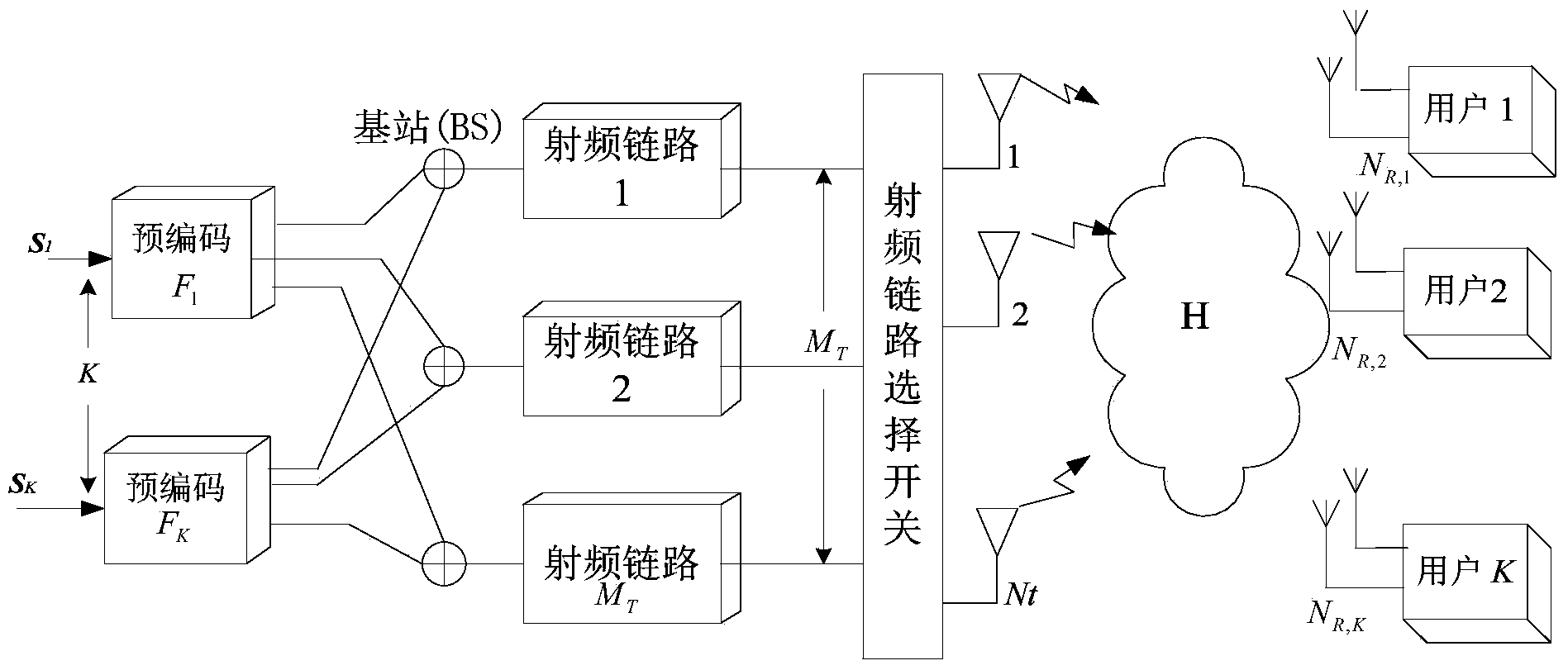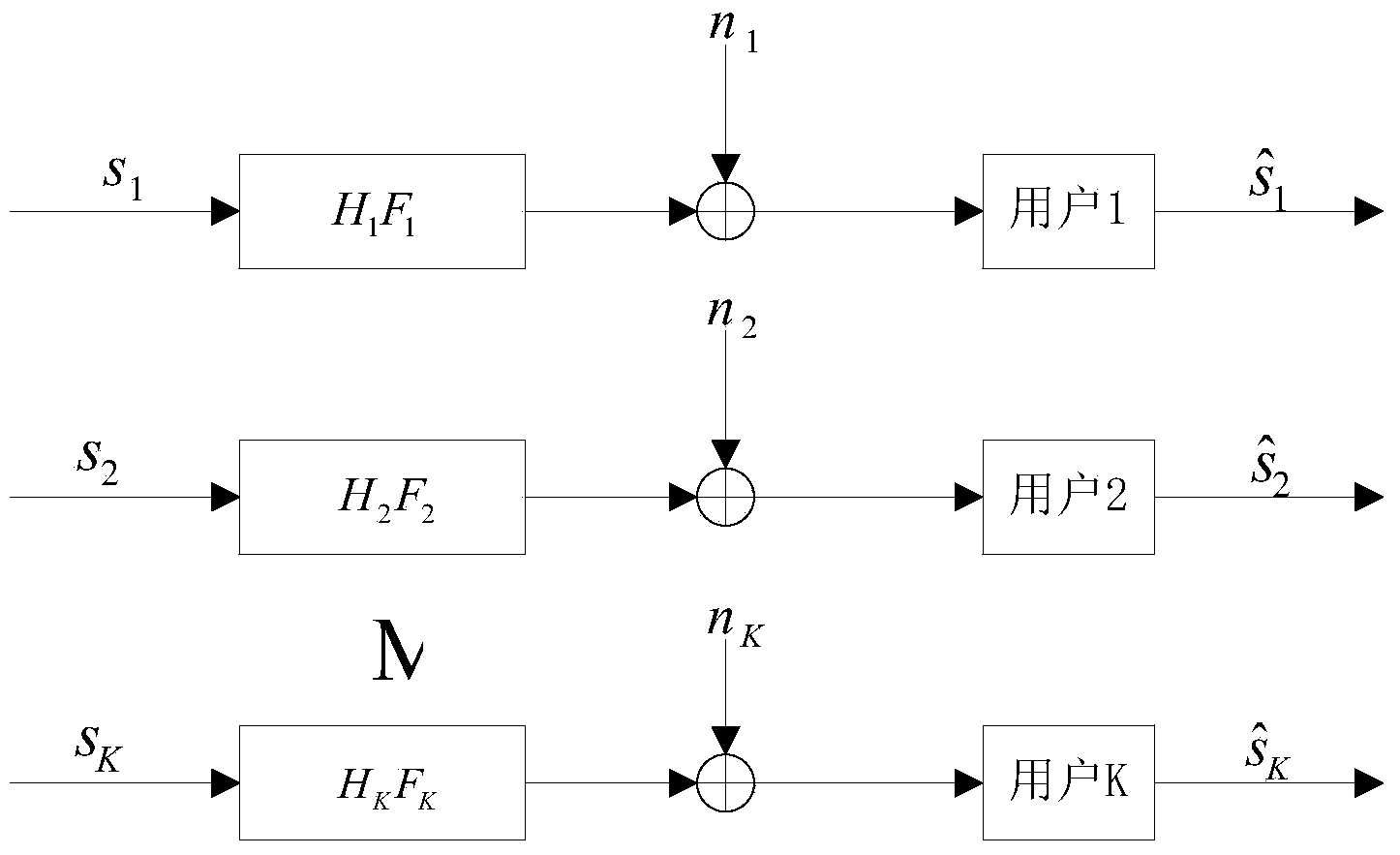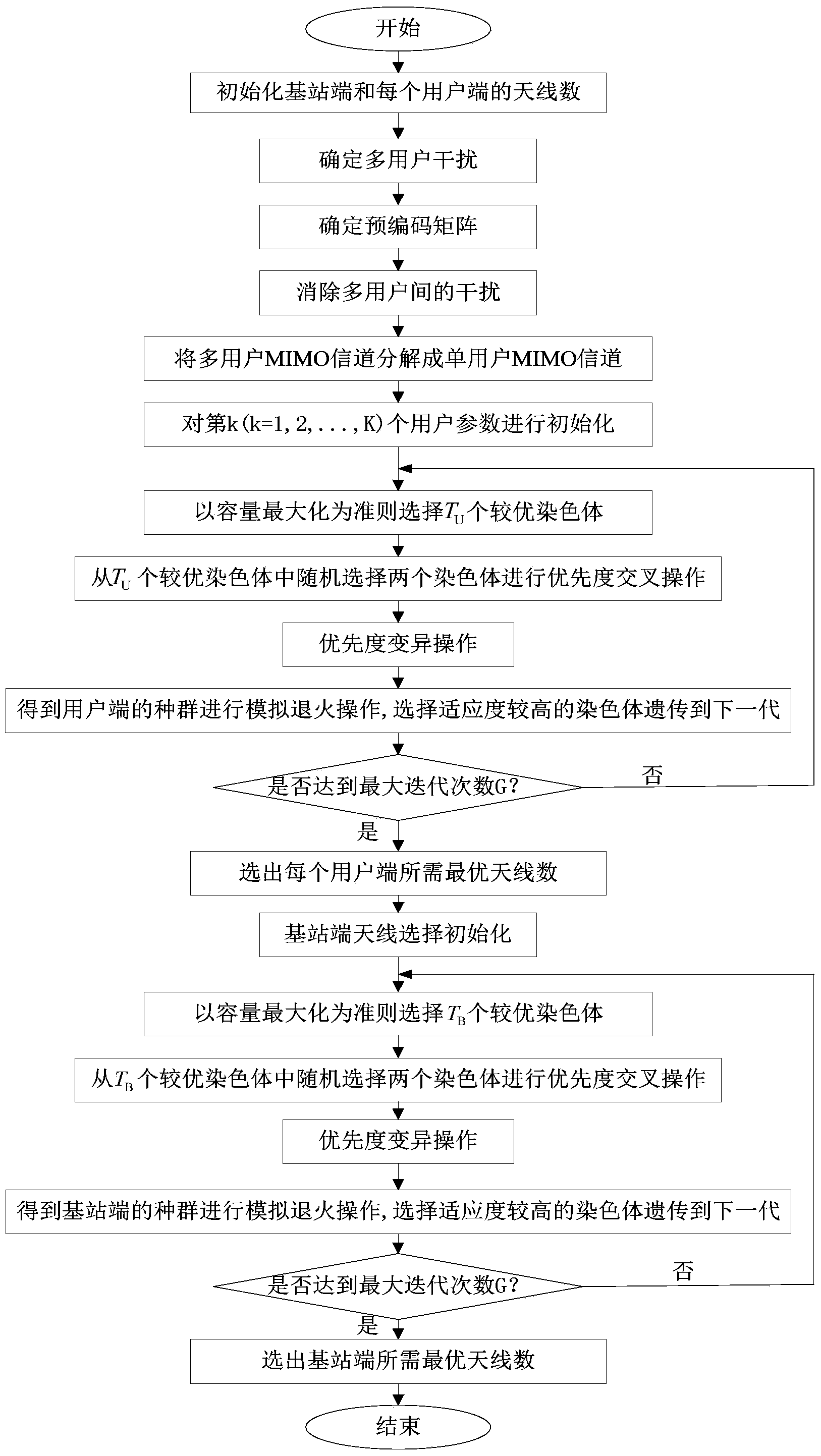Method for selecting multi-user MIMO system antenna based on priority genetic simulated annealing
A technology of simulated annealing and antenna selection, applied in diversity/multi-antenna systems, space transmit diversity and other directions, it can solve problems such as system performance degradation, no optimal selection of the number of antennas at the base station, high computational complexity, etc.
- Summary
- Abstract
- Description
- Claims
- Application Information
AI Technical Summary
Problems solved by technology
Method used
Image
Examples
Embodiment Construction
[0042] The present invention will be further described below in conjunction with the accompanying drawings and specific embodiments.
[0043] As shown in FIG. 1 , it is a system model of the downlink of the multi-user MIMO system of the present invention.
[0044] The multi-user MIMO system antenna selection method based on priority genetic simulated annealing of the present invention, such as image 3 shown, including the following steps:
[0045] Step 1: Initialize the system model parameters of the downlink of the multi-user MIMO system. The system consists of a base station (BS) and K (K≥2) users. Let the initial number of antennas of user k be N r,k , k=1,2,Λ,K, each user selects the optimal number of antennas from its initial number of antennas as N R,k , and satisfy (N R,k r,k ), the initial number of antennas at the base station is M t , from the base station side M t The optimal number of antennas selected in the root transmit antenna is J t , and satisfy The...
PUM
 Login to View More
Login to View More Abstract
Description
Claims
Application Information
 Login to View More
Login to View More - R&D
- Intellectual Property
- Life Sciences
- Materials
- Tech Scout
- Unparalleled Data Quality
- Higher Quality Content
- 60% Fewer Hallucinations
Browse by: Latest US Patents, China's latest patents, Technical Efficacy Thesaurus, Application Domain, Technology Topic, Popular Technical Reports.
© 2025 PatSnap. All rights reserved.Legal|Privacy policy|Modern Slavery Act Transparency Statement|Sitemap|About US| Contact US: help@patsnap.com



